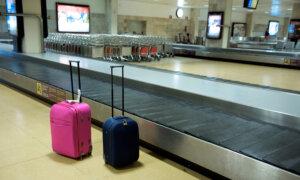If I had a point for every time I got asked about the best way to use points for travel, I’d have enough to fly around the world—twice. After more than a decade in which I turned an interest in loyalty programs into a full-time job, I know how to stretch my points as far as possible.
Used correctly, points can be more valuable than cash. You can use them for everything from a staycation at an extended-stay hotel to a first-class trip to the Maldives. You can plan a cross-country road trip with motel pit stops or fly around the world. The key is to know what your points are worth and use them wisely. As a general rule, you should aim to get at least 1 cent of value out of each point (though that won’t always be possible).
Use Points and Miles for International Business- And First-Class Tickets
International business- and first-class tickets typically offer the highest-value return for your points and miles. For example:- A round-trip business-class ticket to Europe typically costs between 80,000 and 140,000 points or miles, while a cash fare for the same route will typically set you back about $5,000.
- An economy-class ticket to Europe typically costs between 30,000 and 60,000 miles round-trip, with cash fares often going as low as $400 during the off-peak season.
Book Luxury (or All-Inclusive) Hotels and Resorts
Luxury hotels can also offer a tremendous return on your points. The Maldives, for example, is a popular destination for maximizing hotel points. Hotels in the Maldives can cost well in excess of $1,000 per night, making them a great place to use hotel points and free-night awards.But one aspect that often gets overlooked is that these “free” luxury hotel stays often come with many additional expenses. Even if you don’t pay for your hotel room, food can be expensive in these remote destinations, and boat and seaplane transfers can cost more than $500 per person. Unless you were planning to pay out of pocket for the room anyway, you may not save much money on this type of redemption.
A high-value alternative would be to book all-inclusive hotels closer to home (e.g., in Mexico and the Caribbean). Hyatt, Hilton, and Marriott all have all-inclusive resorts that require a reasonable amount of points. Hyatt’s all-inclusive hotels start at 12,000 points per night (in the off-peak season). You can easily accumulate enough points for five free nights using the welcome bonus from the World of Hyatt Credit Card* or Chase Sapphire Preferred Card.
To elaborate, the World of Hyatt Credit Card currently offers up to 65,000 bonus points—you can earn 35,000 points after you spend $3,000 in the first three months of account opening, plus up to 30,000 more points by earning 2X points on purchases (that normally earn 1X points) during the first six months after opening the card (on up to $15,000). The Chase Sapphire Preferred, on the other hand, currently offers 60,000 bonus points after you spend $4,000 in the first three months of account opening.
Use Hotel Points for Low-Category Extended Hotel Stays for Families and Large Groups
There’s more than one way to get value out of hotel points, and I’m a firm believer that extended-stay hotels can be an excellent use of points.Extended-stay properties tend to be some of the cheapest hotels, often requiring a fraction of the points required by their luxury counterparts. But lower redemption rates don’t affect value. In fact, these affordable hotels often offer high-value perks that will improve your hotel experience.
Look for Great Deals on Peak Travel Bookings
During peak travel seasons—including summer, spring break, and the holidays—everything from airfare to hotel rates skyrockets. This can be a great time to use points and miles to keep your costs down.It’s worth noting that an increasing number of airline and hotel loyalty programs—many of which are highlighted in Bankrate’s travel toolkit—are moving toward dynamic pricing. That means redemption rates will fluctuate based on the cost of airfare and room rates. However, you can still put your points and miles to good use in spite of dynamic pricing.
Hotel loyalty programs serve as an example of how these redemptions can work out favorably. For example, a stay at the Westin New York Grand Central over Christmas and New Year’s could cost well in excess of $6,000. The same stay could run you roughly 480,000 Marriott Bonvoy points, giving you a value of 1.25 cents per point. That’s a fantastic value for a Marriott redemption, if you’re able to get the points.
Travel During Off-Peak Seasons and Be Flexible With Your Travel Dates
Although expensive peak-season travel bookings can increase the value of your rewards, off-peak award redemptions can save you points and miles.Case in point: American Airlines is one of the few major airlines that still publishes an award chart, which includes off-peak travel dates for its own awards and partner awards. You may be able to save about 20 percent on an award ticket by traveling during the off-season. For example, a one-way economy-class fare to Europe typically costs 30,000 miles on the airline. The same award costs about 22,500 miles if you’re willing to travel during off-peak dates.
Look for Sweet-Spot Redemptions With Different Airlines and Hotels
Sweet-spot awards are one of the best-kept secrets of airline and hotel loyalty programs. A “sweet spot” refers to an award that’s offered at a significantly lower price compared with most other programs. Familiarizing yourself with sweet-spot redemptions is a great way to get more travel out of a limited points or miles balance.For example, United MileagePlus often requires more than 160,000 miles for a round-trip business-class ticket to Europe. Meanwhile, fellow Star Alliance carrier All Nippon Airways (ANA) requires just 88,000 miles for the same flight. ANA typically gives you a free stopover on these awards itineraries too, allowing you to book multiple trips for the cost of one.
Award tickets to Hawaii are always in demand, and even off-peak travel from the West Coast can cost 40,000 AAdvantage miles or more round-trip. However, British Airways Executive Club has a sweet spot for West Coast travelers, starting at just 13,000 Avios each way.
Take Advantage of Consecutive-Night Discounts
Numerous hotel loyalty programs offer the fourth or fifth night free when you book consecutive nights. By booking longer stays, you can stretch your hotel points much further.As an example, Marriott Bonvoy offers the fifth night free on award stays for all members, while Hilton Honors limits this benefit to those who hold their co-branded credit cards and those who earn Silver Elite status or higher. Additionally, IHG One Rewards provides the fourth night free on consecutive-night bookings for members with an IHG co-branded credit card such as the IHG One Rewards Club Premier credit card.*

Redeem Rewards for Good-Enough Value When Needed
Although following the above advice will ensure maximum value for your points and miles, you should use your rewards however you see fit. If redeeming Chase Ultimate Rewards points for a New Orleans ghost tour makes you happy, then go for it. If using your American AAdvantage miles for a rental car keeps cash in your pocket, do it.Although the best way to use points and miles usually involves redeeming them for international business- and first-class flights, the best way for you to use your own points and miles may differ. Your rewards are yours to use, so you may want to ignore what the influencers are doing and do whatever works best for you.
The Bottom Line
The best way to use points and miles for travel comes down to your personal preferences. However, by redeeming them strategically, you can stretch their value further. Take advantage of sweet spot awards, splurge on luxury travel, and redeem your points during either peak or off-peak travel seasons.By planning ahead and comparing cash rates with award prices, you can save money on travel and make the most of your points and miles.
- Credit card points and miles are types of credit card rewards that you can earn for all eligible spending with your card. These types of rewards structures are usually a feature of travel credit cards.
- Whenever you swipe your travel rewards credit card, you’ll earn points or miles for all eligible purchases. For example, you might earn a higher points or miles rate for select types of purchases (such as airfare, rideshares, or dining) along with a fixed rate on all other purchases.
- Many points and miles cards allow you to redeem your rewards for different types of travel, cash back, merchandise, and gift cards, but redemption options will vary from card to card. Since credit card points and miles are usually a feature of travel credit cards, you’ll typically get the best value for travel-related redemption options.








